Presentation at the seminar on the topic of “Triadic Epistemology of Narrative Experience” as a part of the “Arts Does Method” Series, 24 October, 2019, in Oen Hall Building (Main), Ho Sin Hang Campus.
Tag: narrative
Activities related to narratives, and narrative systems, art-science, academic and popular events, including related industry engagements
Affective Computing ACII 2019 conference Cambridge
The 8th International Conference on. Affective Computing & Intelligent Interaction ( ACII 2019). 3rd-6th September, 2019. Cambridge, United Kingdom.
Enactive Virtuality team has two abstracts accepted for multidisciplinary Special Tracks :
(1) Neural and Psychological Models of Affect and (2) Technological and Biological Bodies in Dialogue: Multidisciplinary Perspectives on Multisensory Embodied Emotion and Cognition.
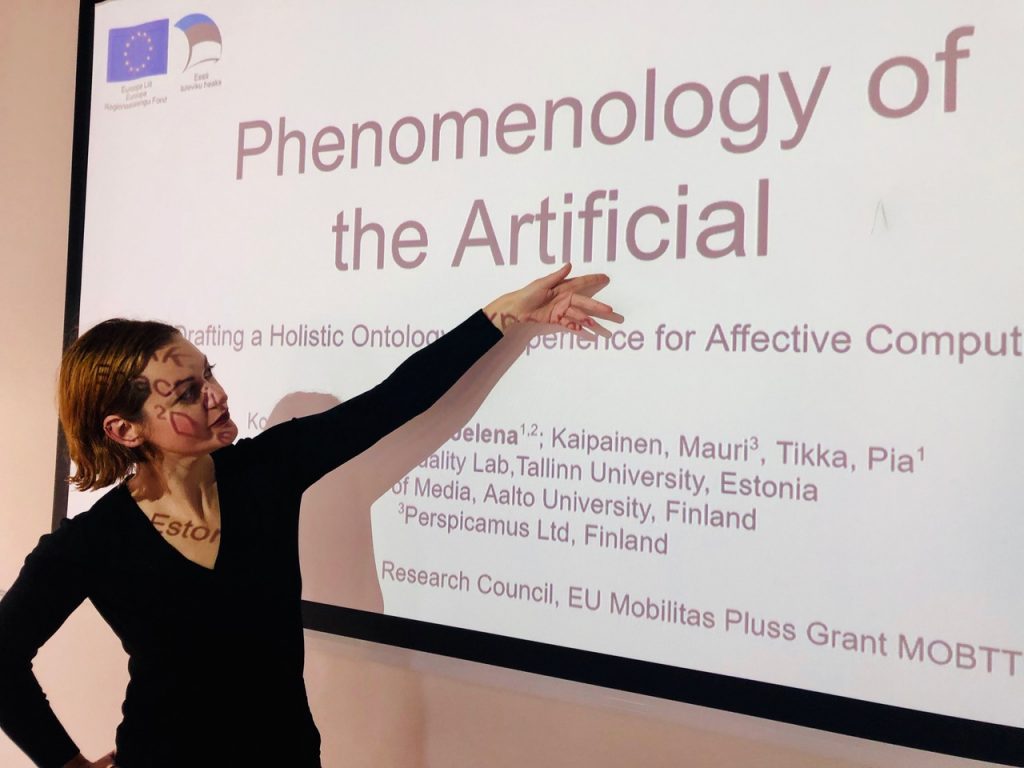
Image: Jelena Rosic in action during an TLU ‘s internal pre-presentation of the ACII conference talk “Phenomenology of the Artificial” by Kosunen, Rosic, Kaipainen and Tikka,
Keynote at Actor and Avatar seminar at ZHdK
![]()

An invited keynote at the two day conference “Actor and Avatar” organised by Professor Anton Rey, IPF, ZHdK August 29th and 30th 2019 at the Toni Areal, Zurich University of the Arts (ZHdK). The “Actor and Avatar” project explores aspects of actor performances particularly aimed to provide facial expressiveness for a virtual character (avatar) and is funded by the Swiss National Science Foundation.
The VR Installation The State of Darkness previously exhibited in the Science Gallery, Dublin (Dec 2018) and in the 360 degrees (Prague 2019) will be presented at the conference. In addition, Enactive Virtuality Lab’s team member Victor Pardinho will run a Master’s Class for ZHdK students and staff.
The keynote by Pia Tikka 29th of August will address a range of topics related to the actors and humanlike virtual characters in the collaborative setting as described under the image.
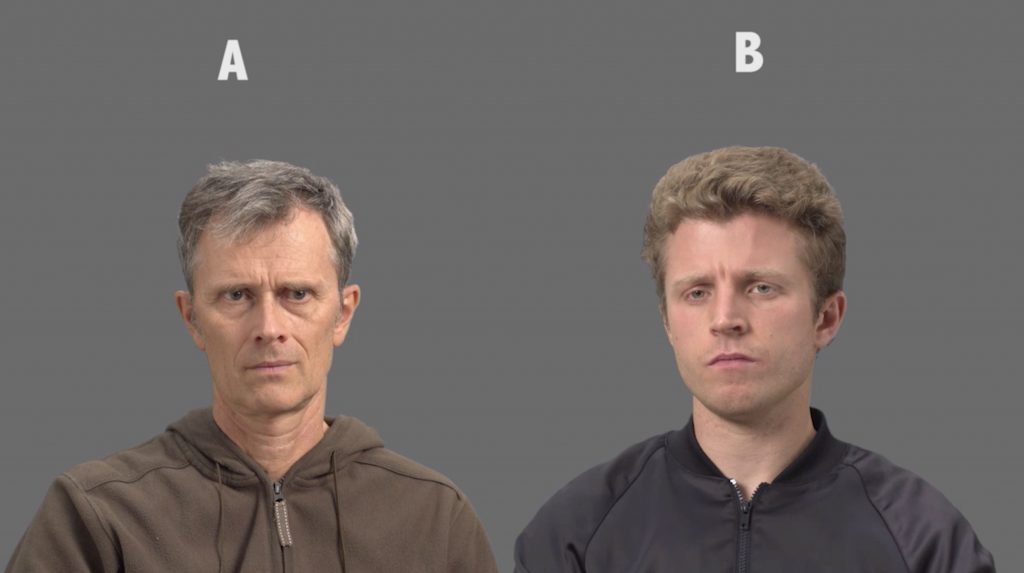

Images: Two examples of the recordings of a dyadic realtime setting where the two actors are seated in front of a Green Screen in the ZHdK IPF Film studio looking at each other through a display in front of them directly connected to the camera in front of the other actor. The other actor takes the role of an asylum seeker’s interviewer (I), while the other actor plays the role of an asylum seeker (AS). Both are listening to the dramatised background story of the latter while engaged in evaluation of each others emotional state within the dramatised context. The performances are applied to humanlike virtual characters in the project Booth developed at the Enactive Virtuality Lab. Actors (upper row) Dr. Gunter Lösel [AS] and Tim Woody Haake [I]; (row below) Corinne Soland [I] and Samuel Braun [AS]. Images©IPF courtesy of Dr. Rey and Miriam Loertscher from ZHdK research group.
Presenters included:


Images: Derek Bradley, Walt Disney Research Studio Zürich (above) and Matthias Wittmann, Digital Domain (below)


ACTOR & AVATAR EXHIBITION: STATE OF DARKNESS INSTALLATION
 Industry engagement: Derek Bradley, Walt Disney Research Studio Zürich was one of the enactive experienters of facing Adam B in the State of Darkness. Here with Pia Tikka and Victor Pardinho (Sense of Space, Finland).
Industry engagement: Derek Bradley, Walt Disney Research Studio Zürich was one of the enactive experienters of facing Adam B in the State of Darkness. Here with Pia Tikka and Victor Pardinho (Sense of Space, Finland).
The State of Darkness: Master’s Class at the ZHdK
VR installation The State of Darkness exhibited at the ZHdK Sept 28–30.
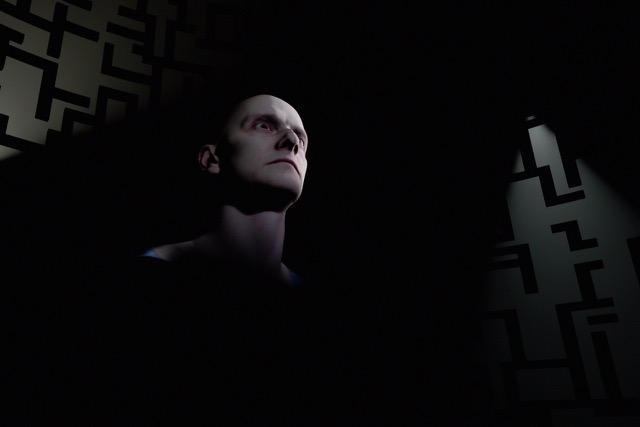
Master Class by Victor Pardinho 28 Aug
Master’s Class by Victor Pardinho at the ZHdK September 28,2019
Topic:
Volumetric intelligence: A framework for the creation of interactive volumetric captured characters.

In this workshop, the author will introduce a framework for virtual characters based on the volumetric scanning of real actors and 3D real-time engines. Participants will have an opportunity to check the system used at “The State of Darkness”, a biosensor driven VR art installation where human and non-human narratives coexist. The structure of the meeting is flexible and can be adjusted accordingly to the participant’s interests. We will discuss topics such as 3D asset workflows, real-time engines, volumetric capture and the design and production of XR experiences.
The Oscar G. Brockett Book Prize winner
The Oxford Handbook of Screendance Studies has been awarded the 2018 Oscar G. Brockett Book Prize for Dance Research by The Dance Studies Association.
Pia Tikka & Mauri Kaipainen contributed with the chapter on “Screendance as Enactment in Maya Deren’s At Land: Enactive, Embodied, and Neurocinematic Considerations”
The award will be conferred at the annual Dance Studies Association Conference at Northwestern University, August 8 – 11, 2019.
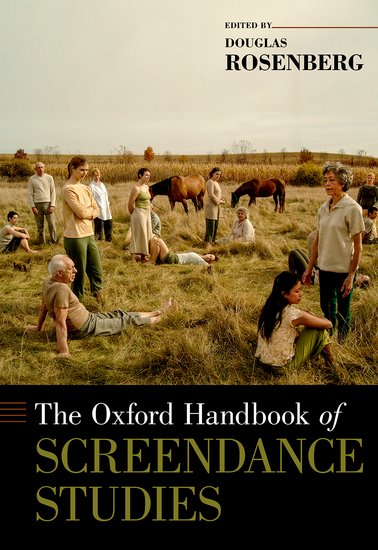
The following is the citation offered by the selection committee about the book:
The Oxford Handbook of Screendance Studies, which is skillfully edited by Douglas Rosenberg, features a gracefully comprehensive introduction and thirty-six impactful chapters from leading scholars who expand our understanding of screen technologies as creative, collaborative tools for dance. Both foundational and insightful, the essays focus on pioneering figures like Loie Fuller, Maya Deren, and Norman McLaren; on histories from Harlem and Hollywood to Brazil and Bollywood; and on themes that productively intertwine virtual bodies, framing, editing, space, race, gender, and politics. Authors from Dance Studies and related fields turn their gazes toward the way screendance can provide a liberating or controlled space, an ever-changing canvas, a democratic frontier, a site for social justice, new aesthetic pleasure, or a viral phenomenon with many meanings. Readable, rigorous, and thought-provoking, The Oxford Handbook of Screendance Studies engages popular, contemporary, traditional, and historical dance, offering wide-ranging new ways of understanding how ideas travel and can transform our lives through the “stage” of the screen.
The award will be conferred at the annual Dance Studies Association Conference at Northwestern University, August 8 – 11, 2019.
The Oxford Handbook of Screendance Studies is the first publication to offer a scholarly overview of the histories, practices, and critical and theoretical foundations of the rapidly changing landscape of screendance.
VRHAM — Virtual Reality & Arts Festival Hamburg
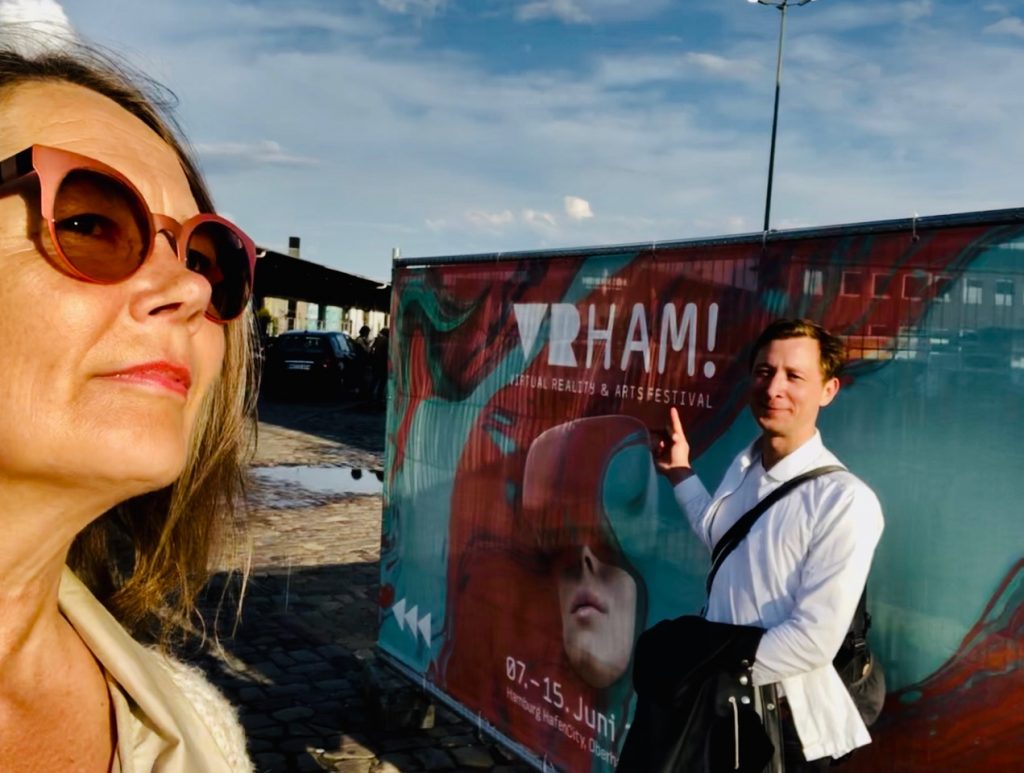
With Piotr Winiewicz (in image) and Mads Damsbo at the VRHAM! (Virtual Reality & Arts Festival Hamburg), the Germany’s first international Festival for Virtual Reality Art. Established by Ulrich Schrauth in Hamburg in 2018, VRHAM! opened its doors for the second time, from 7 – 15 June 2019, in Hamburg’s Oberhafenquartier. Under the year’s motto “DIS:SOLUTION” a large selection of extraordinary Virtual Reality experiences and live performances by contemporary artists was presented.
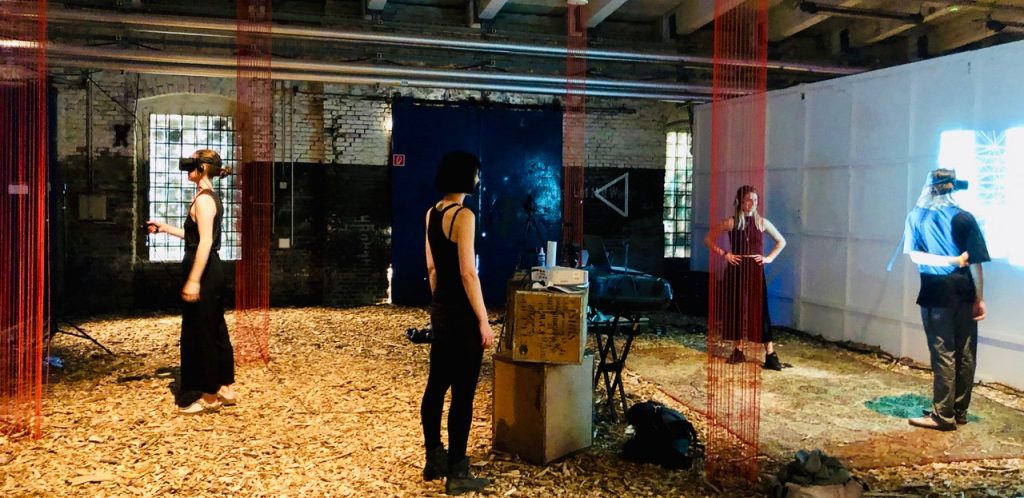
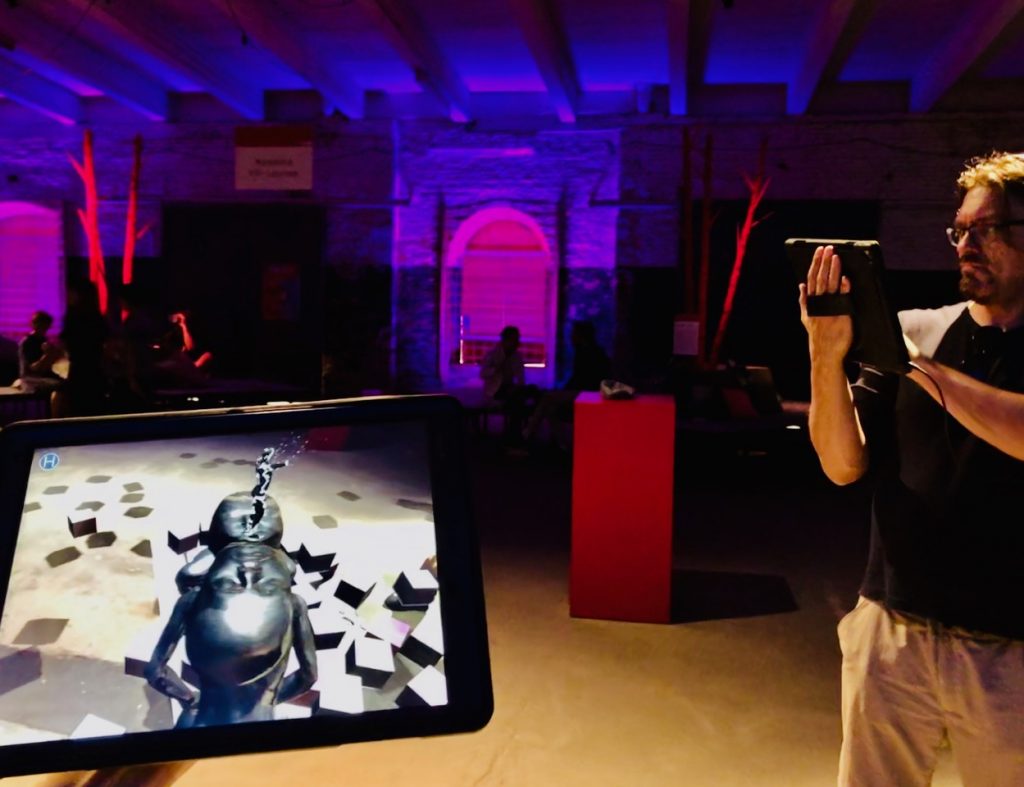
Image: Cinematographer and my doctoral student Sampsa Huttunen (University of Helsinki) exploring the Augmented Reality work by–
0AR
AOI NAKAMURA, ESTEBAN FOURMI, UK, 2018

Experiencing 0AR communally via three connected devices, audiences are encouraged to explore, move around the space and interact where their actions have a unique influence within the performance. 0AR is based on seminal masterpiece zero degrees (2005), a collaboration between dancers/choreographers Akram Khan, Sidi Larbi Cherkaoui, sculptor Antony Gormley and composer Nitin Sawhney.
Below a selection of other exciting VR works:
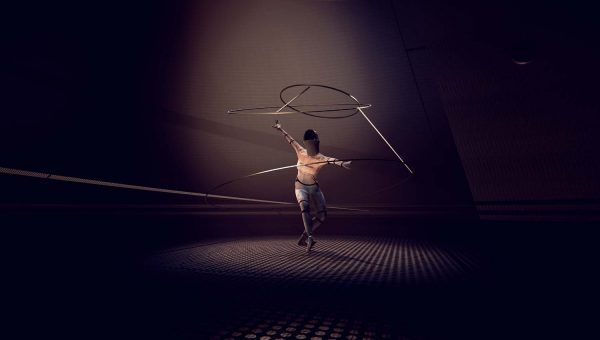
DAS TOTALE TANZ THEATER
INTERACTIVE MEDIA FOUNDATION & FILMTANK, GERMANY, 2019
Who are humans in the age of technology? What role do they play and how do they interact with the machines that surround them? These types of questions were already negotiated at the Bauhaus 100 years ago. DAS TOTALE TANZ THEATER frames these questions today in the context of the development of artificial intelligence by staging a virtual reality dance experience.
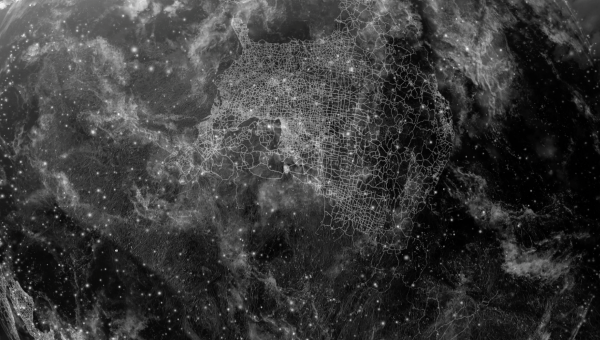
LAST WHISPERS: AN IMMERSIVE ORATORIO
LENA HERZOG, USA, 2018/2019
At an unprecedented speed faster than the extinction of most endangered species, we are losing our linguistic diversity—and the very means by which we know ourselves. This immersive oratorio is an invocation of the languages that have gone extinct and an incantation of those that are endangered.

CLAUDE MONET – THE WATER LILY OBSESSION
NICOLAS THÉPOT, FRANCE, 2018
From 1899 to 1926, Claude Monet painted more than 250 scenes devoted to the water lily theme, which became what he himself called “an obsession.” This contemplative VR experience invites the user on a sensory journey starting off in Claude Monet’s garden, stopping along the way at the workshop of the artist and ending in the exhibition rooms of the Orangerie Museum.
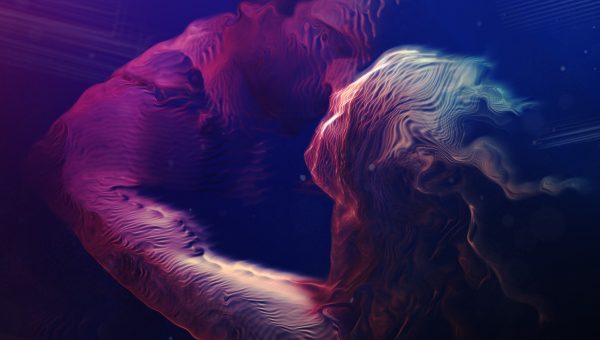
VESTIGE
AARON BRADBURY, UK/USA/FRANCE, 2018
Vestige is a room-scale VR creative documentary that uses multi-narrative and volumetric live capture to take the viewer on a journey into the mind of Lisa as she remembers her lost love, Erik.
SCSMI conference Hamburg
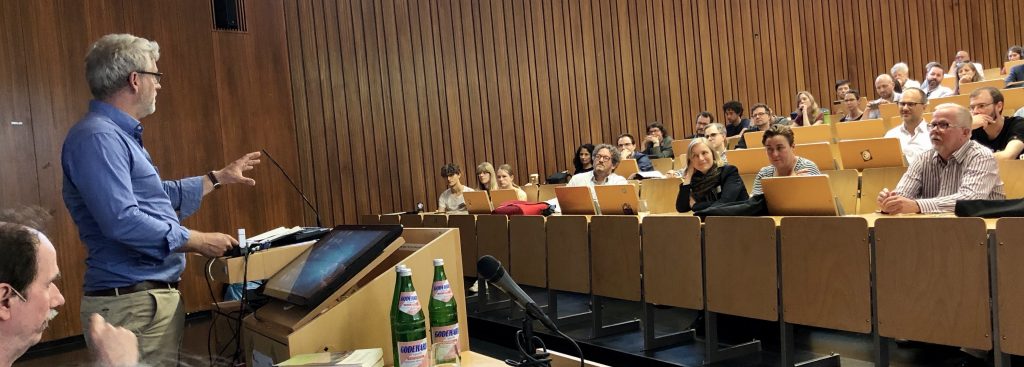
Image: Dr Johannes Riis opens the plenary session for honouring the academic career and contribution of professor Torben Grodal at the SCSMI, chaired by Dr. Stephen Prince (right corner). 5 invited speakers included in addition Ed Tan, Mette Kramer, Pia Tikka, and David Bordwell on the June 13th.
Conference presentation Pia Tikka: Enactive Virtuality: Modelling triadic epistemology of narrative co-presence
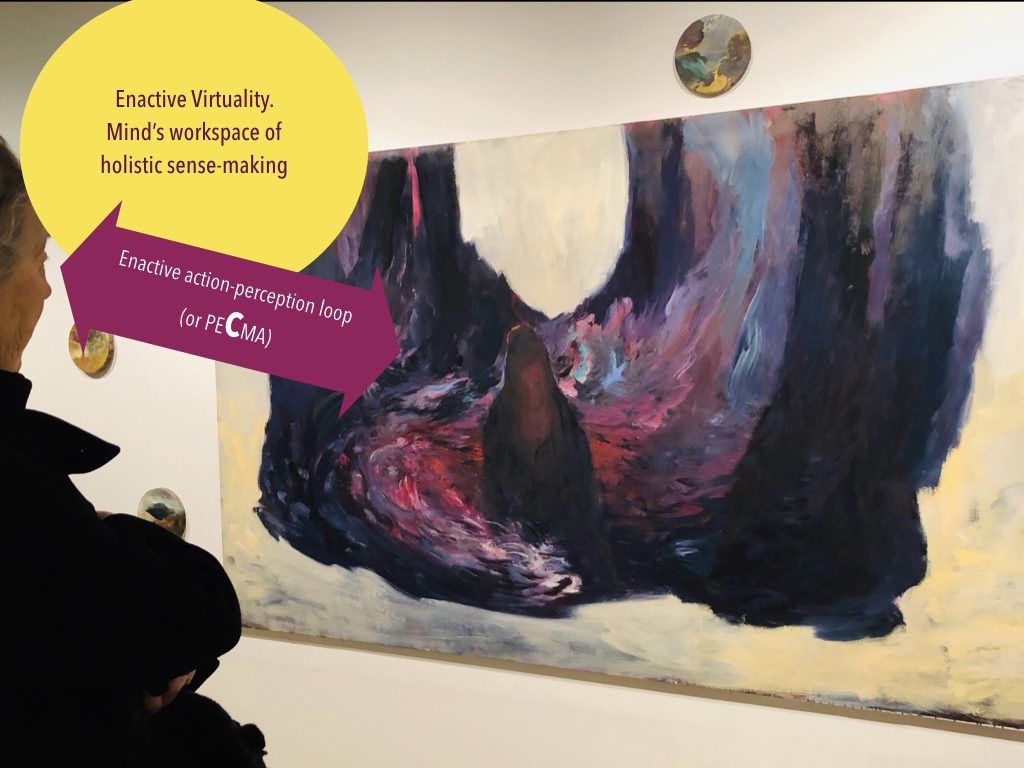
The presentation discusses the concept of enactive virtuality in terms of a triadic epistemology, in which holistic understanding is accumulated via reflecting subjective experience against its psychophysiological epiphenomena and varying narrative contexts. Film narrative can evoke strong emotional identification with the screen character, however, in a context-dependent manner. The aim is to deepen the holistic understanding of cinematic narrative in particular as simulated person-to-person encounter. Two concretising case studies of person-to-person encounter are discussed. The first setting applies conventional film as a model of life situations, while another dramatic setting assigns the viewer an enactive role when engaging with an artificial screen character. These settings are compared and analysed in terms of the mentioned triadic epistemology.
EEVR @ EKA Estonian Art Academy
EEVR nr 23 tuleb EKAs!
Estonian Virtual Reality Community meeting at the EKA Estonian Art Academy June 8, 2019.

Image: The Head of the VR Lab, teaching staff, and specialist tutor Johanna Jõekalda, presenting the EKA’s student projects that have applied biosensor data for studying the participant experience.
Program in Estonian:
Enne suurt suve vaatame üle Eesti Kunstiakadeemia VR Labori ja kuulame/proovime palju huvitavat. Kohtumisel tutvustatakse EKA VR Laboris möödunud aasta jooksul läbi viidud kursuseid (Johanna Jõekalda), VRi rakendusvõimalusi disainiprotsessis (Artur Staškevitš) ning VR-prillide uut tähte Oculus Questi (Kristjan Oliver Kuus). Olete oodatud mõtteid vahetama!
12:00 Esitlused:
– EKA VR Labori kursused (Johanna Jõekalda)
https://www.artun.ee/erialad/arhitektuur-ja-linnaplaneerimine/vr-labor/
– VR tehnoloogiate kasutus projekteerimistöös (Artur Staškevitš)
http://arturstashkevitsh.berta.me/
– Oculus Questi esmamuljed (Kristjan Oliver Kruus)
13:30 Demod:
– EKA VR Labori projektid
– Oculus Quest
– TASE lõputööde näituse VR projektid
Ürituse järel soovi korral ringkäik EKA uues majas ja TASE lõputööde näitusel.
Sissepääs peauksest aadressil Põhja puiestee 7. Üritus toimub 4. korrusel arhitektuuriosakonna ruumides.
Prague Quadrennial’s 36Q˚ exhibits The State of Darkness

The State of Darkness is exhibited at BLUE HOUR of the Prague Quadrennial’s 36Q˚ June 8-16, 2019.
Enactive Virtuality Lab is presented by associated team members Tanja Bastamow (Virtual Cinema Lab, Aalto ARTS) and Victor Pardinho (Sense of Space Oy). Biosensor adaptation for the event by Ilkka Kosunen.
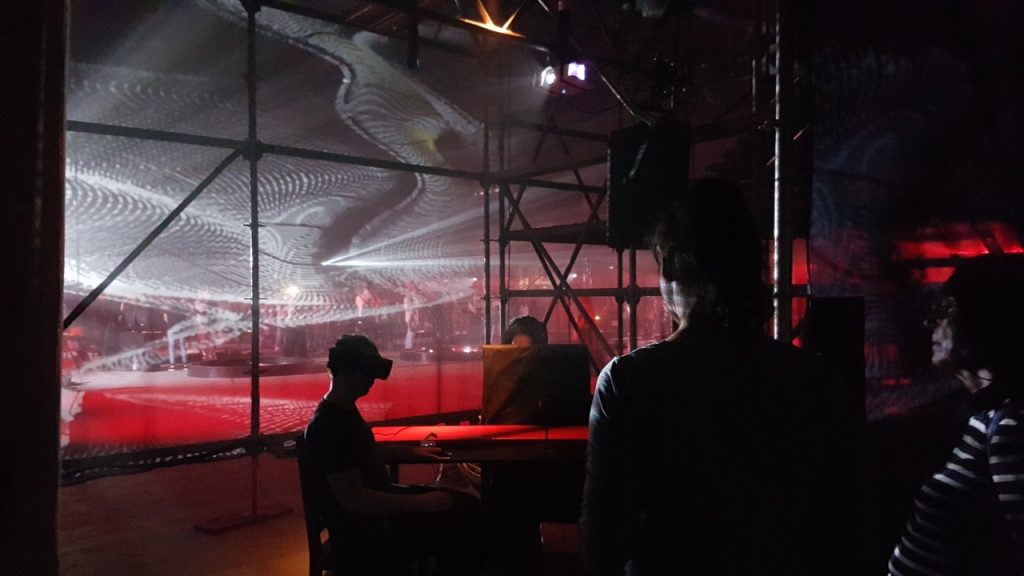
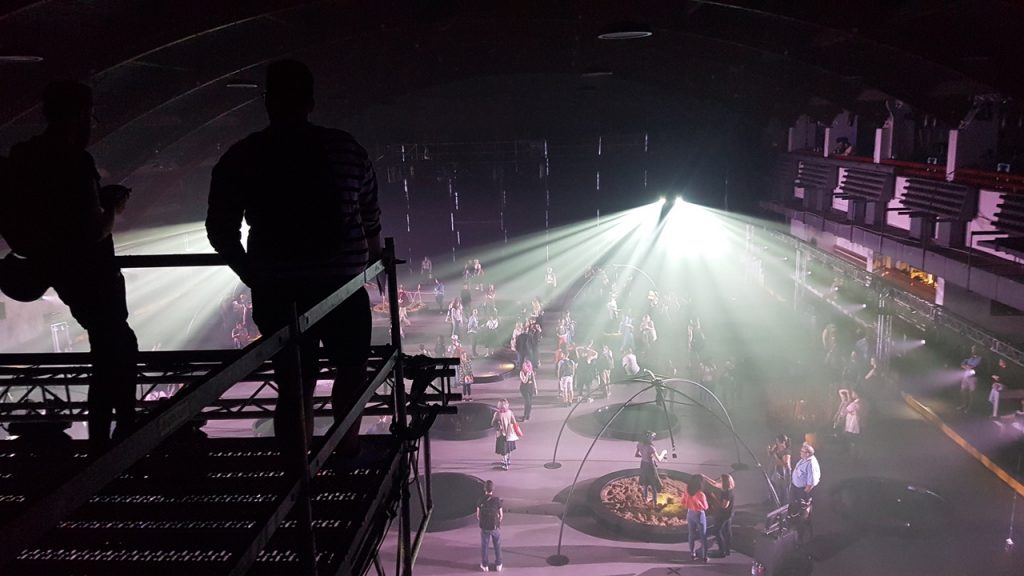

Prague Quadrennial’s 36Q˚ (pronounced “threesixty”) presents the artistic and technical side of performance design concerned with creation of active, sensorial and predominantly nontangible ironments. Just like a performer, these emotionally charged environments follow a certain dramatic structure, change and evolve in time and invite our visitors to immerse themselves in a new experience.
WORKSHOPS, MASTERCLASSES
Curated by Markéta Fantová and Jan K. Rolník
8 – 16 June
Small Sports Hall
Our global society seems to be obsessed with fast paced progress of technology and elevates rational intellectual and scientific pursuits above arts that are intuitive and visceral in their nature. And yet creative minds based in the arts are proving that the boundless imagination paired with new technological advancements often result in original and highly inspiring mind-expanding projects. Even though performance design doesn’t need to use modern technology and is often the most inspiring when it uses simple human interaction, we need to explore and experiment with wide range of possibilities new technologies have to offer. PQ Artistic Director Marketa Fantova established 36Q˚ with those thoughts in mind and with a focus on the young, emerging generation of creatives.
Blue Hour
An experimental, interactive environment that fills the entire space of the Industrial Palace Sports Arena will welcome visitors on 8 June and remain open until the end of PQ 2019. The project, based on intensive team work that brings together experienced artists with emerging designers to collaboratively create, will be led by renowned French visual new media artist Romain Tardy. The curatorial team seeks to experiment with the shifting boundaries between the “non-material” or “virtual” and the “real” world, to explore the capacity of performance design to enlist technology in cultural production.
See more here
TALK by professor Iiro P Jääskeläinen Brain and Mind Lab Aalto Uni
Invited lecture and a collaboration meeting with professor Iiro P Jääskeläinen and Enactive Virtuality Lab May 21-22, 2019.
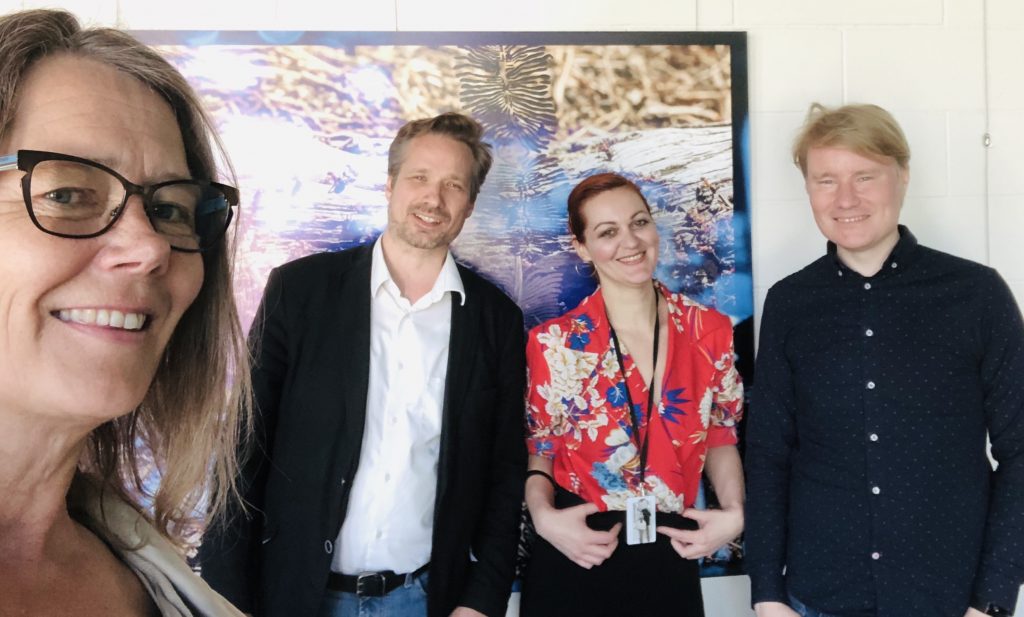
Image: Pia Tikka, Iiro P Jääskeläinen, Jelena Rosic, and Ilkka Kosunen at MEDIT meeting space.
May 21 at 3-4 pm Dr Iiro P. Jääskeläinen, Associate Professor of the Brain and Mind Laboratory, Department of Neuroscience and Biomedical Engineering, Aalto University School of Science, Finland,
gave an open neurocinematic talk on “Using movies as real-life like stimuli during neuroimaging to study the neural basis of social cognition” (room M-134).
Abstract:
Movies and narratives are increasingly used as stimuli in neuroimaging studies. This in many ways helps bridge the gaps between neuroscience, psychology, and even social sciences by allowing stimulation of, and thus also measurement of neural activity underlying, phenomena that have been less amenable to study with more traditional neuroimaging stimulus-task designs. Observation of signature patterns underlying discrete emotions across largely shared brain structures have suggested that both basic and dimensional emotion theories are partly correct. Robust differences in brain activity when viewing genetic vs. adopted sisters going through a moral dilemma in a movie clip have shown that knowledge of shared genes shapes perception of social interactions, thus demonstrating how neuroimaging can offer important measures for social sciences that complement the traditional behavioral ones. Furter, more idiosyncratic brain activity has been observed in high-functioning autistic than neurotypical subjects specifically in putative social brain regions when watching a drama movie. Development of data analysis algorithms holds keys to rapid advances in this relatively new area of research. Modeling the stimulus and recording brain activity is significantly complemented by behavioral measures on how the subjects experienced the movie stimulus.
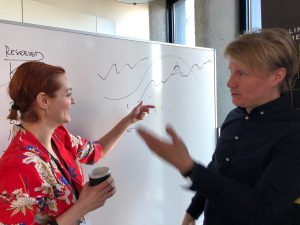

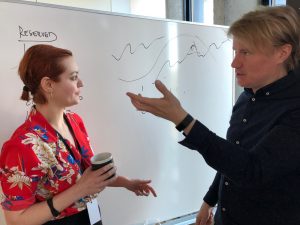

Image: Jelena Rosic and Ilkka Kosunen engaged in discussing correlations between ‘pheno’-dynamics and ‘neuro’-dynamics for our micro-phenomenological Memento study, a follow-up for Kauttonen et al 2018.